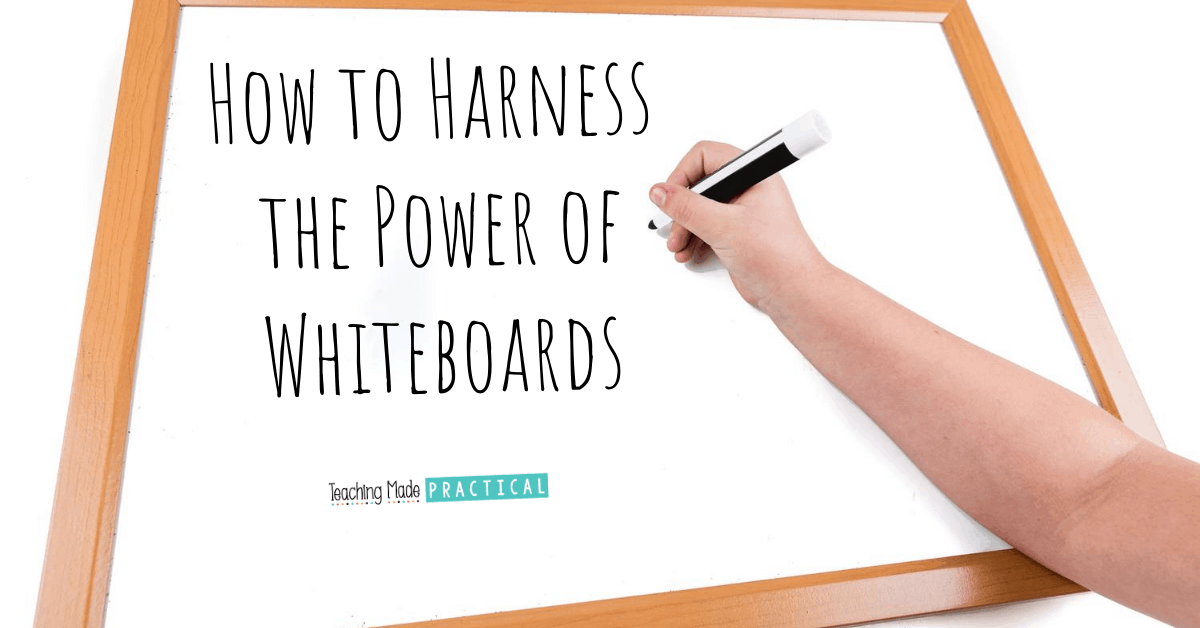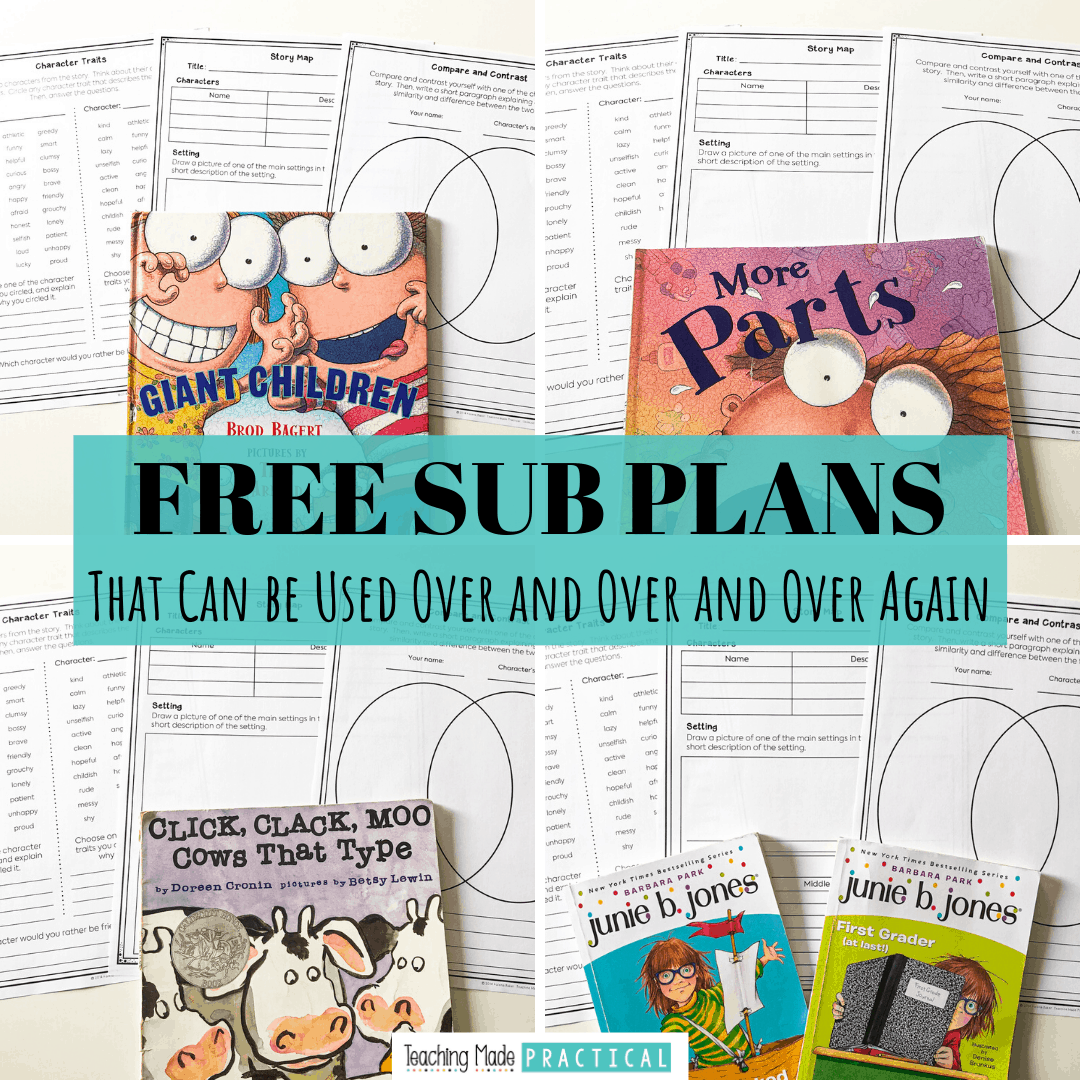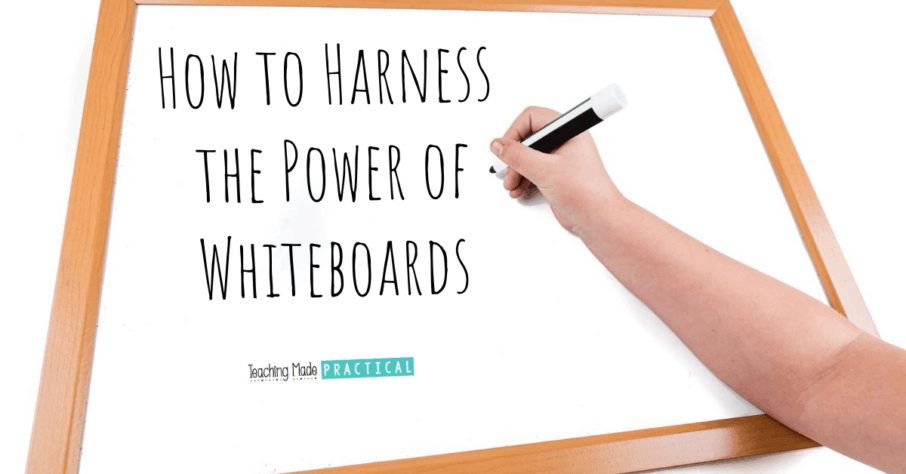
I really don’t know what I would have done if I had to teach in a time before personal whiteboards and dry erase markers. They were essential to my classroom – so essential that they are one of my 11 Must Haves for Upper Elementary Teachers.
We didn’t just use them on a daily basis in my classroom – we were using whiteboards in the classroom consistently throughout almost every lesson.
Because they were such an integral part of my classroom, thinking through how I wanted to use them in the classroom and what whiteboard procedures I wanted to set up was important.
Benefits of Using Whiteboards in the Classroom
There are many benefits to integrating personal whiteboards regularly into your lessons.
Increased Students Engagement:
Dry erase markers are just more fun than pencil and paper. A 3rd grade, 4th grade, or 5th grade student will always be more excited about doing their work with a dry erase marker.
Allows for a Quick Assessment:
Having students complete a math problem, write an answer, or explain their thinking on a whiteboard was my favorite way to quickly assess student work. I would walk around the classroom or have the students “reveal” their answer (hold it up facing me), and
I could easily see who was struggling – or if the entire class was struggling and I needed to reteach. When students write with pencil, it’s hard to see everybody’s answers all at the same time.
Allows for a Quick, Unplanned Activity When You are Interrupted:
Teachers are interrupted all the time in the middle of lessons. Phone calls, unplanned guests, or behavior problems that need to be immediately addressed waste valuable classroom time. And students that are left alone without a task for a few minutes can quickly become out of control.
Giving students an assignment to complete on their whiteboard doesn’t require any advance planning. Have students illustrate one of their vocabulary words, count by multiples of 7, or try one of these decoding multisyllabic words activities. This will keep students on task and learning while you take care of the interruption.
Many of these no prep vocabulary activities and this word study activity is made even easier with a dry erase board and markers.
Easy to Erase Mistakes:
Writing with dry erase markers is less permanent. With a quick wipe of an eraser, all mistakes are gone. This makes for a safe learning environment, where your struggling students or your students that want everything to be perfect are more willing to make mistakes.
Doesn't Waste Paper or Require Copies
This benefit is pretty self-explanatory. Anything that means less paper and less trips to the copy machine is good.
For all the benefits, the main disadvantage is the cost of dry erase markers. But teachers are experts at stocking up when there is a sale!
Take the classroom outdoors with these fun outdoor scavenger hunts that cover a variety of skills. The 8 scavenger hunts include:
- 5 senses scavenger hunt
- nouns and adjectives hunt
- math review
- living and nonliving
- syllable sort
- ...and more!
Get 8 scavenger hunts for $2.00 and enjoy some sunshine with your students!
White Boards, Dry Erase Markers, and Classroom Management
Storage
Where are you going to have students store their whiteboards and markers? Will they have easy access? How can you store the materials so that students do not have to get up out of their seats every time you want to use them?
One of the main benefits of using whiteboards and dry erase markers is that they provide for a quick activity or a quick assessment. If it takes a long time for students to get the materials, then it is no longer a benefit.
Community Markers VS Personal Markers
Will students share the dry erase markers as a class (community supplies) or will they use their own personal markers that they brought? How will you handle it when students do not provide enough markers to last the entire year? How will you handle students with inferior brands of dry erase markers? (Yes, I am very biased towards Expo Dry Erase Markers – it’s worth the extra cost to get markers that work!)
Personally, I preferred for students to get to keep their own supplies. However, this caused too much trouble and too much wasted time. I decided to just provide students with markers all year. They were such an integral part of my classroom that it was worth the cost.
Community Markers VS Personal Markers
How will you teach your students to take care of the dry erase markers so that they last as long as possible? What do you consider appropriate uses for dry erase markers? Will students be able to use them to draw in their free time? Will you allow students to do things that waste the ink in the marker, like write unnecessarily big?
3rd grade, 4th grade, and 5th grade students still need direct instruction on how to take care of school supplies!
Other Tips for Creating Whiteboard Procedures
- I found that having students store dry erase markers in a cup in their group tote instead of in their desk prevented students from wasting the ink in their markers or losing them.
- I had students store whiteboards in their desks for quick and easy access.
- I cut a bunch of small “erasers” out of felt at the beginning of the year. Students stored these erasers in the same cup as they stored their dry erase markers.
- I provided every group with black dry erase markers that looked exactly the same. Students did not have a marker “assigned” to them. This made the pass out process quicker and easier, with no arguments over who got what color.
- If a student used a dry erase marker improperly, then they had to complete the activity using pencil and paper instead. The next time we used whiteboards and dry erase markers, they could try to follow procedures again. Since I was consistent with this at the beginning of the year, I had very few problems throughout the year.
You might also like some of my other classroom management ideas:
Classroom Jobs
Pencil Sharpening
Morning Routines
Never Stress Over Sub Plans Again!

Make copies, find a fiction book, and you'll be ready for any emergency that comes your way!




Comments 3
Pingback: My First Year Teaching: A Reflection - Billy Ryan Shelton
Loved all your ideas. Please subscribe me to your newsletter!
Author
You can sign up here! You will get free sub plans when you sign up.